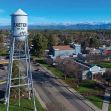On New Year’s Eve in 2015, a 23-year-old man got drunk; ate a marijuana-laced brownie; went up to the sloped, tiled roof of his building; slipped; and fell off. Four hours later, he was found barely alive on the hood of a car that was parked near the building’s roof. He was rushed to the hospital but died soon after. His parents sued for wrongful death. The appeals court said the owner of the building owed the deceased no duty of care and affirmed the trial court’s ruling of summary judgment.
The parents of Abel Montes, Jr. (Montes) the deceased, filed a wrongful death action based on liability and negligence in 2015. Associate Justice Elizabeth A. Grimes of Division Eight of California’s Second District Court of Appeal authored a unanimous affirmation of the ruling of Los Angeles Superior Court Judge Jon R. Takasugi on August 3. In her opinion, Grimes said, “{B}ecause there was no practical necessity for Mr. Montes, or any individual, to encounter this open and obvious danger, the harm here…is not foreseeable as a matter of law.”
Montes’ building was owned by the defendants, the Young Men’s Christian Association of Glendale (Glendale Y). During the trial, defendants argued that Montes’s parents lacked evidence to show that the condition of the roof caused the accident and that the building owner had a duty to prevent it. Plaintiffs countered that the roof was in a dangerous condition. They said it had no guardrails, walkways or railings. They said it “sloped at a steep angle and (was) covered with brittle, broken, slippery and unstable Spanish tiles.” They also argued that the owner had not posted any “Stay Off the Roof” warning signs. The door to the roof was not locked, and when opened, it led to a short ladder that went to the roof.
Plaintiffs also presented evidence that the building owner knew that residents sometimes accessed the roof. One witness, who was not particularly helpful, said that the Glendale Y “had heard of roof stuff,” but could provide little clarification. Even if people sometimes went on the roof, the opinion said, that does not make the danger foreseeable.
During the trial, Montes’s parents also presented Brad Avrit, a safety expert who testified that he saw graffiti, beer bottles and cigarette butts near the accident site. In his opinion, Avrit said, “it was more probable than not” that Montes slipped on the tiles and fell.
Avrit’s testimony led the trial court to deny defendants’ motion for summary judgment because the condition of the roof was a “triable issue of fact.” Motions for both sides were filed about whether the Glendale Y owed Montes a legal duty to protect him from the “obvious risk of falling from a roof.” After a hearing, the trial court vacated its summary judgment order and ruled that the Glendale Y did not owe Montes a “duty to warn of, or remedy, the open and obvious danger posed by the roof.” They found that Montes’s fall was not foreseeable as a matter of law. Plaintiffs then appealed.
Justice Grimes explained the legal standard for a summary judgment ruling, which is that “one or more elements of the cause of action cannot be established, or that there is a complete defense to the cause of action.” She wrote that the negligence theory presented in this case requires plaintiffs to show that the Glendale Y owed Montes a legal duty of care based on the dangerous condition of the roof.
She explained that duty arises from foreseeability, or whether the negligent conduct is “sufficiently likely” to result in harm. She added that foreseeability is “typically absent when a dangerous condition is open and obvious,” such as when a man was injured when he climbed onto a diving board to get a better view and fell into an empty swimming pool. She called the dangerous action of the man in the key case that supplied precedent “obvious to any adult.” She then wrote that there was “no meaningful distinction” between the man on the diving board and the man on the slippery roof.
Both dangers were “open and obvious.” Montes had no necessity to be on the roof. Also, she ruled that plaintiffs cannot use “Montes’s voluntarily induced state of intoxication to claim that he was unaware of the dangerous peril.” In addition, the deceased was “neither required nor invited to expose himself to the risks associated with an open door and obvious danger.”
Showing little patience with plaintiffs’ case, she again denied that the property owners owed a duty. “There is a limit as to how far society should go…in order to protect individuals from their own stupidity, carelessness, daring, or self-destructive impulses,” she said, in a clear rebuke.
So don’t drink alcohol, ingest marijuana, and climb onto a slippery roof. Tragic as this young man’s death is, the fault lies with his own actions and not the property owner in the eyes of the law.






